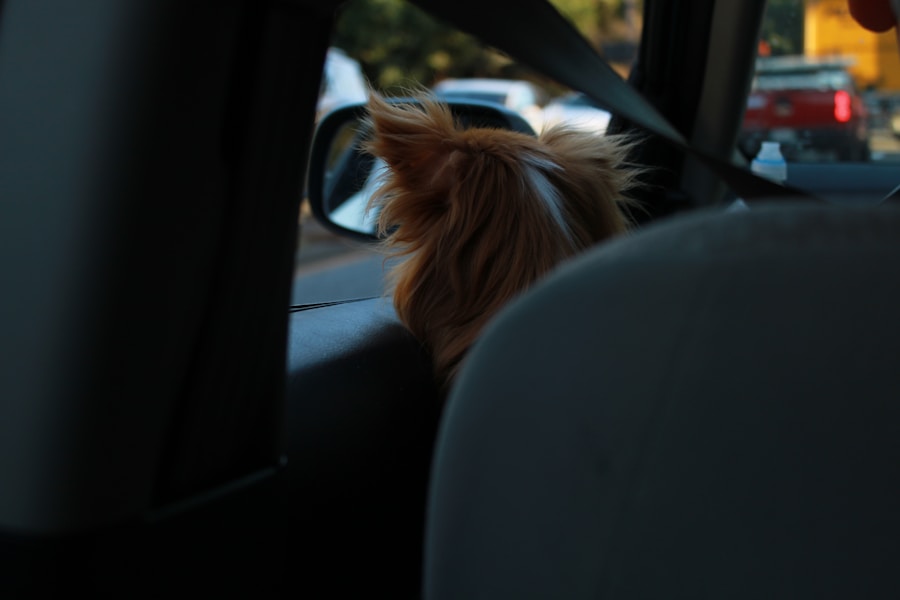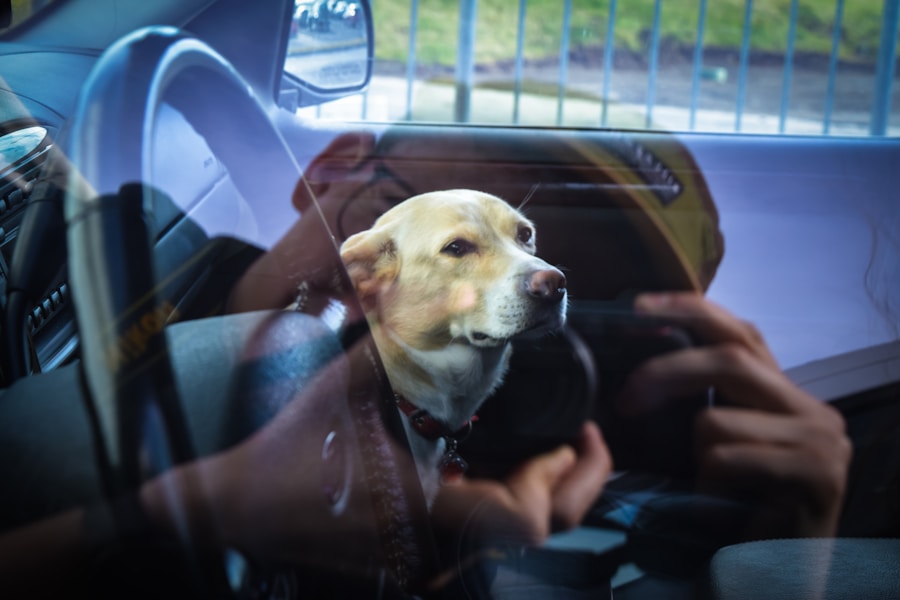As pet ownership continues to rise, so does the need for regulations that ensure the safety of both animals and humans during travel. Dog seat laws are a relatively new area of legislation that addresses the proper transportation of dogs in vehicles. These laws vary significantly from state to state, reflecting differing attitudes toward pet safety and public welfare.
In some regions, there are strict regulations mandating that dogs be secured in a manner similar to human passengers, while other areas may have more lenient guidelines or none at all. Understanding these laws is crucial for pet owners who wish to travel responsibly with their furry companions. The rationale behind dog seat laws is rooted in safety.
Just as unrestrained human passengers can pose a danger in the event of an accident, so too can unrestrained dogs. In a collision, an unrestrained dog can become a projectile, potentially injuring itself or other passengers. Furthermore, a dog that is not secured may distract the driver, leading to dangerous driving conditions.
As awareness of these issues grows, more states are beginning to implement laws that require pet owners to take responsibility for their pets’ safety while traveling.
Key Takeaways
- Dog seat laws vary by state and it’s important to understand the regulations in your area.
- Insurance policies may have specific clauses regarding pets in the car, so it’s important to review your policy.
- Allowing dogs in the front seat can pose safety concerns for both the dog and the driver.
- There are legal implications to consider if you allow your dog in the front seat, including potential fines and liability in the event of an accident.
- There are alternative options for traveling with dogs, such as using a pet restraint or a designated pet travel crate.
Understanding Insurance Policies and Regulations
Insurance Clauses and Liability Coverage
When traveling with dogs, it’s essential for pet owners to understand their insurance policies. Many insurance companies have specific clauses regarding pet-related incidents that occur while driving. For instance, if a dog causes an accident due to being unrestrained, the owner’s liability coverage may be affected.
Securing Pets in Vehicles
Some policies may even stipulate that pets must be secured in a vehicle to qualify for full coverage in the event of an accident. This means that failing to comply with local dog seat laws could not only lead to legal repercussions but also financial consequences.
Varying Insurance Regulations and State Laws
Insurance regulations can vary widely depending on the provider and the state in which one resides. Some states have enacted laws that require pet owners to secure their animals in vehicles, which can influence how insurance companies assess risk and liability. For example, if a state mandates that dogs must be restrained in a vehicle, an insurance company may view non-compliance as negligence, potentially leading to higher premiums or denied claims. Therefore, it is vital for dog owners to familiarize themselves with both local laws and their insurance policies to ensure they are adequately protected.
Safety Concerns for Dogs in the Front Seat

The front seat of a vehicle presents unique safety concerns for dogs. One of the most pressing issues is the risk of injury from airbags. Airbags are designed to protect human passengers during collisions, but they can be extremely dangerous for pets.
This risk is compounded by the fact that many dogs are not accustomed to being restrained and may move around unpredictably during travel. In addition to the dangers posed by airbags, having a dog in the front seat can lead to distractions for the driver.
A dog that is excited or anxious may jump around, bark, or attempt to climb into the driver’s lap, diverting attention away from the road. This distraction can significantly increase the likelihood of an accident. Studies have shown that even minor distractions can impair a driver’s reaction time and decision-making abilities, making it crucial for pet owners to consider the implications of allowing their dogs in the front seat.
Legal Implications of Allowing Dogs in the Front Seat
| Legal Implications | Details |
|---|---|
| Seat Belt Laws | Many states have laws requiring dogs to be restrained while in a vehicle, including in the front seat. |
| Distracted Driving Laws | Having a dog in the front seat can be considered a distraction and may lead to a citation for distracted driving. |
| Animal Cruelty Laws | If a dog is injured due to being in the front seat during a car accident, the owner may be subject to animal cruelty charges. |
| Liability in Accidents | If a dog in the front seat causes or contributes to an accident, the owner may be held liable for any resulting damages. |
The legal implications of allowing dogs in the front seat can be significant, particularly in states with specific dog seat laws. In some jurisdictions, failing to secure a dog while driving can result in fines or other penalties. For example, California has laws that require pets to be restrained while traveling in vehicles; violations can lead to fines ranging from $100 to $500 depending on the severity of the offense.
Such legal frameworks are designed not only to protect pets but also to enhance overall road safety. Furthermore, if an accident occurs and it is determined that a dog was unrestrained in the front seat, this could complicate legal proceedings. Insurance claims may be denied based on non-compliance with local laws, and pet owners could face liability issues if their unrestrained dog contributes to an accident.
In extreme cases, neglecting to secure a pet could even lead to charges of animal endangerment or reckless driving. Therefore, understanding the legal landscape surrounding dog transportation is essential for responsible pet ownership.
Alternatives for Traveling with Dogs
Given the potential dangers associated with allowing dogs in the front seat, many pet owners are exploring alternatives for safe travel. One popular option is using a pet seatbelt or harness designed specifically for dogs. These devices attach directly to a vehicle’s seatbelt system and help keep dogs secure during travel while allowing them some freedom of movement.
Many models are crash-tested and designed to minimize injury risk in case of an accident. Another alternative is utilizing a pet carrier or crate that is secured within the vehicle. Crates provide a safe space for dogs and can help reduce anxiety during travel.
When properly secured with seatbelts or tied down, crates can prevent dogs from becoming projectiles during sudden stops or collisions. Additionally, some vehicles come equipped with pet-friendly features such as built-in restraints or designated pet areas that enhance safety while traveling with dogs.
Tips for Ensuring Safety and Compliance

To ensure safety and compliance with dog seat laws, pet owners should take several proactive steps before embarking on any journey. First and foremost, it is essential to research local laws regarding pet transportation and understand what is required in your area. This knowledge will help avoid potential fines and ensure that you are adhering to best practices for pet safety.
Investing in high-quality restraint systems is another critical step. Look for harnesses or seatbelts specifically designed for dogs that have been crash-tested and meet safety standards. Additionally, familiarize your dog with its restraint system before hitting the road; this can help reduce anxiety and make travel more comfortable for both you and your pet.
Gradually acclimating your dog to its harness or crate can lead to a more enjoyable travel experience.
Consequences of Violating Dog Seat Laws
Violating dog seat laws can lead to various consequences that extend beyond mere fines. In many states, law enforcement officers have the authority to issue citations for unrestrained pets during traffic stops. These citations can carry financial penalties and may also result in points on your driving record, which could lead to increased insurance premiums over time.
Moreover, if an unrestrained dog causes an accident or injury, the legal ramifications can be severe. Pet owners may find themselves facing lawsuits from other parties involved in the incident, especially if it is determined that their negligence contributed to the accident. In some cases, this could result in significant financial liability or even criminal charges if animal endangerment is involved.
The repercussions of ignoring dog seat laws highlight the importance of responsible pet ownership and adherence to safety regulations.
Conclusion and Final Considerations
As society continues to evolve in its understanding of animal welfare and road safety, dog seat laws will likely become more prevalent across various jurisdictions. Pet owners must remain informed about these regulations and take proactive measures to ensure compliance while prioritizing their pets’ safety during travel. By understanding insurance implications, recognizing safety concerns associated with allowing dogs in the front seat, and exploring alternatives for safe transportation, pet owners can navigate this complex landscape effectively.
Ultimately, responsible travel with dogs requires a commitment to safety and adherence to legal requirements. By investing in proper restraint systems and familiarizing themselves with local laws, pet owners can enjoy peace of mind while traveling with their beloved companions. The journey should be enjoyable for both humans and pets alike; ensuring safety through compliance with dog seat laws is a crucial step toward achieving this goal.
If you’re interested in learning more about financial topics, you may want to check out the article Hello World: A Beginner’s Guide to Personal Finance. This article provides valuable information on managing your money and making smart financial decisions. It complements the discussion on insurance and pet safety in cars, offering insights on how to protect your finances while ensuring the safety of your furry friends.
FAQs
What are the laws regarding dogs sitting in the front seat of a car?
In most states, there are no specific laws that prohibit dogs from sitting in the front seat of a car. However, some states may have distracted driving laws that could apply if a dog is causing the driver to be distracted.
Can insurance coverage be affected if a dog is sitting in the front seat during a car accident?
In the event of a car accident, insurance coverage may not be affected solely because a dog was sitting in the front seat. However, if the dog was a distraction to the driver and contributed to the accident, the insurance company may take that into consideration when determining fault and coverage.
What precautions should be taken when driving with a dog in the car?
It is important to secure your dog properly in the car to ensure their safety and to minimize distractions for the driver. This can be done using a harness, crate, or barrier designed for use in a vehicle. Additionally, it’s a good idea to keep the dog’s head inside the car to prevent injury from debris or airbags in the event of a crash.
Does insurance cover injuries to a dog in a car accident?
In the event of a car accident, some insurance policies may cover injuries to a dog if the owner has purchased optional pet injury coverage. This coverage is typically available as an add-on to a comprehensive or collision policy and can help pay for veterinary bills if the dog is injured in a car accident.


